

If you are looking to have your roof repaired or renewed, it is worth considering the materials required and where they might fit into your roof design.
Repair work is a common solution if the overall condition of your roof is still at a stage where remedial work can extend the roof’s life. Budget may also play a part in deciding to repair your roof rather than renewing it.
In either case, choosing the right materials and the right type of solution to a repair needs to be undertaken with sympathy to the building in question. For instance, if you have an old property with character and history, choosing modern, man-made materials to cover your roof may not be in the best interests of the overall appearance and feel of the building.
The same can be said if your property is a more modern home. Choosing a reclaimed, natural product may not blend well with the look and feel of the building.
Consider these when selecting materials and a competent roofer to carry out such works.
AMR has produced this helpful guide to roofing materials to help you decide which would be most appropriate for your property. Here you will find a list of AMR members including those who are specialists in working with some of the listed materials.


The main pitched roof covering.
Natural slate
Natural slate is an extremely robust, hard-wearing roof covering, with a
charming appearance.
Typically all roofing slates have a cleaved edge around their perimeter which gives a very hand-made, natural feel to the roof area.
Slates come in many forms from all over the world, with several prominent quarries existing in the UK. These include Penryn Quarry in North Wales, which is arguably the highest-quality roofing stone in the world. Other quarries include Burlington in the North of England and Delabole in Cornwall.
You may also be offered European or South American slates from your roofing contractor, which are also of a high quality and will outlast any man-made product. However, these materials are costly, and care must be taken to choose a contractor who has a good understanding of the material.
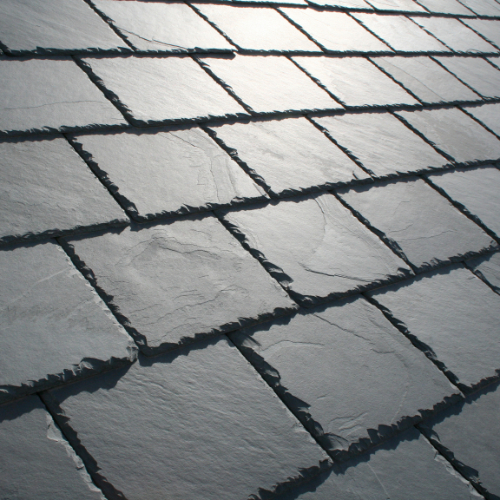
Plain tiles
Offering a very historic and traditional roof covering in many parts of the UK, these
small tiles give a charming appearance to a property and are suitable for many types of homes.
Plain tiles come in varying types. Concrete plain tiles are typically the cheapest available and come in a variety of colours. Clay plain tiles are a far harder and longer-lasting material over concrete, but as a result of the firing process and the care and attention to manufacture, tend to be more costly than man-made plain tiles.
The third type is hand-made plain tiles which are used extensively in the south
of England, the south-east and are also used in scattered pockets in other areas of the UK. They lend themselves well to period properties and more traditional buildings as they immediately create a rustic and beautiful appearance to a roof.
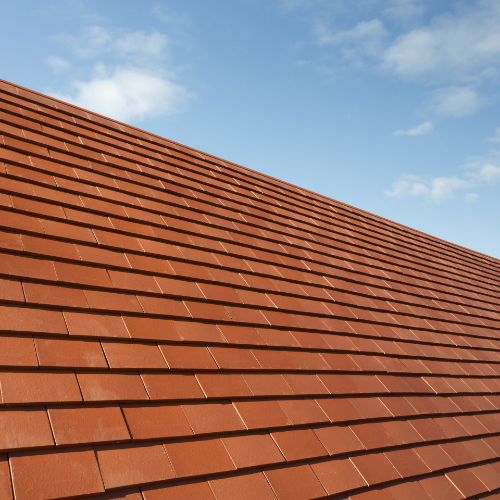
Thatch
This is one of the oldest and most traditional forms of roof covering in the UK.
Thatching is a complex and highly-skilled roofing discipline. Although some thatched roofs still stand in the north of the UK, the majority of thatched properties now only exist in the south of England and some small pockets of South Wales.

Wooden Shingles
Shingles are an attractive natural roof covering.
Bundles of wooden shingles are made by splitting and feathering wood into tapering thin wedges. These are typically created using cedar, although other woods are used.
Shingles are less hard-wearing than some of the other natural products but they are still widely used the UK, especially for garden buildings and wall cladding on properties.
Cedar shingles gradually lose their deep rich brown colour as they weather and instead take on a beautiful silver appearance.
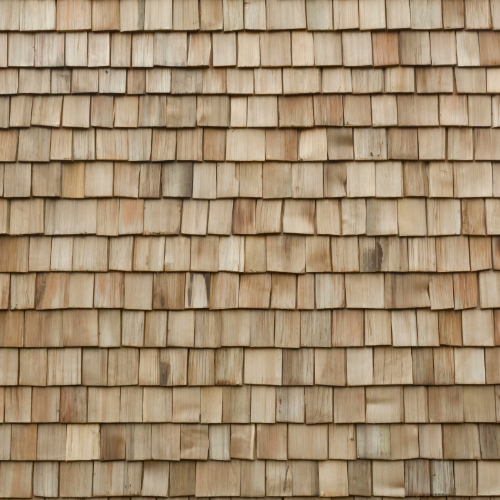
Pantiles
Pantiles are a very traditional tile in the UK.
They are used in many areas of the country, with hotspots like Somerset, Kent and Essex still using clay pantiles as a mainstay of domestic architecture, both in new and reclaimed forms.

Interlocking tiles
Interlocking tiles are a relatively modern approach to roof tiling after gaining popularity in the 1950s and 1960s.
These types of tiles are now a typical choice for new-build contractors and modern architecture. Inexpensive and hard wearing, these materials are fast to install and come in a large range of colours and profiles.

Man-made roof coverings
Many man-made tiles and slate alternatives now exist for homeowners to select.
These materials are often made from fibre cements, recycled plastics and even bituminous components.
Although these products have a place in design and architecture, they tend to lend themselves best to modern buildings with simple roof designs.
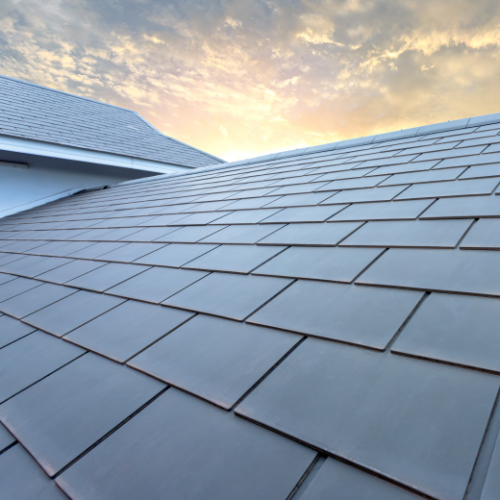

Lead metal
Lead is a high quality sheet metal material which does not rust, as it is a non-ferrous metal.
It has a silver/grey appearance and can be easily shaped and formed by ‘bossing’, ie moving the material by carefully tapping it with an array of specialist tools, or ‘dressing’, which is bending, folding and flattening the sheet.
Lead is a fantastic choice for flat roofing projects and is incredibly pleasing to look at when installed by a specialist leadworker. It is a good choice for homeowners with more traditional or period properties.
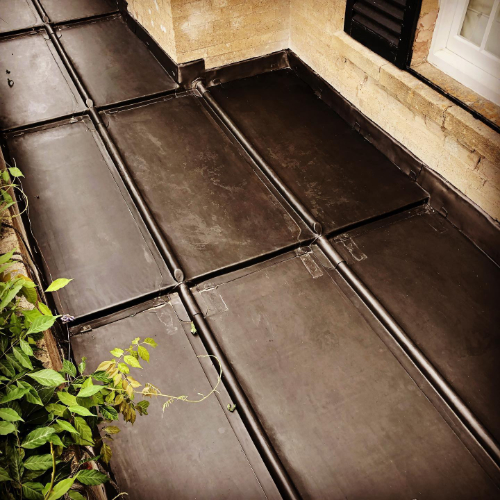
Zinc metal
Zinc roofing is now becoming a very popular choice for modern architects due to its quality and installation advantages.
It comes in a variety of colour coats which can create a modern and sleek look to a roof and its surrounding details.

Aluminium metal
Much like zinc, aluminium is a popular choice for modern architects and designers due to its colour coating variation, lightweight installation and longevity.

Copper metal
Still being used in many roof settings, copper is a very attractive material which when installed by a hard metal specialist, can look incredibly beautiful.
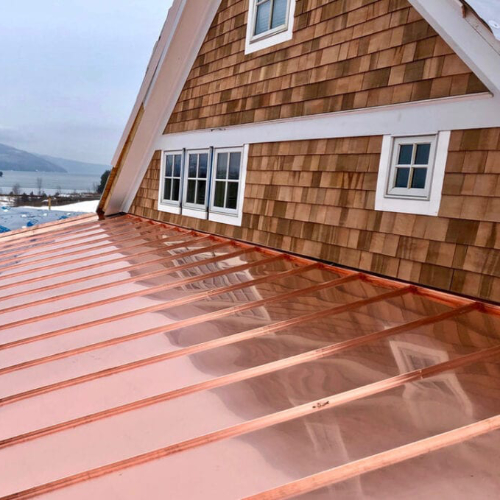
EPDM/Rubber roof
EPDM is typically a single sheet of rubber which is used to span the flat roof, with a series of folds and turns which help to create joints, upstands and details within the flat roof area.
It has a reasonable lifespan for its overall cost and is quick to install. Compared to other flat roofing materials, EPDM is one of the lightest to use and can be installed very quickly.
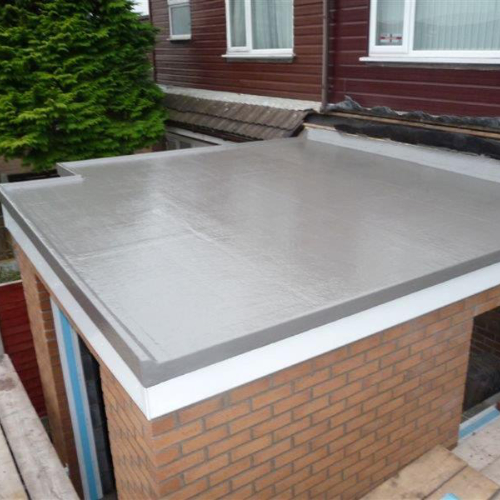
Single ply
A high grade thick material with an extremely long lifespan, single ply has even been used to line reservoirs due to its strength and durability.
Single ply is more expensive than EPDM and also has a larger overall weight when installed on a flat roof.
It is usually light grey in colour and can either be heat-welded to seal joints and details, or chemically glued using high strength solvents.
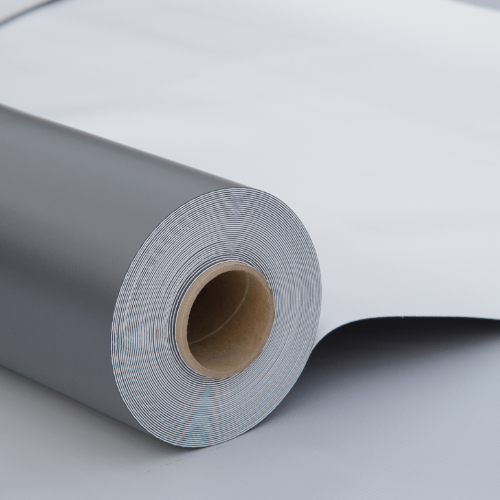
GRP roof
GRP is a very commonly used flat roof material.
It is applied using rollers and brushes; tins of resin are mixed and installed on to the roof, together with matting to increase the resin’s overall strength and durability.
GRP is an affordable flat roof solution with a typical life expectancy of 20 to 30 years.

Torch on felt
Torch on felt is probably the oldest of the flat roofing techniques after metals, and is incredibly long lasting if installed correctly.
Bituminous rolls with a two- or three-part build-up are rolled out while a heat torch is used to melt the bitumen adhesive to a decking.
This creates a strong, durable flat roofing solution which can last up to 50 years if correctly installed and maintained.

UPVC
UPVC is a low-maintenance plastic alternative to timber boarding, suitable in many settings and available in many profiles, sizes and colours.
It eliminates the need for treatment, painting and varnishing, etc, so is very useful for many domestic and commercial roofline solutions including dormer cladding, fascias, barge boards and soffit.
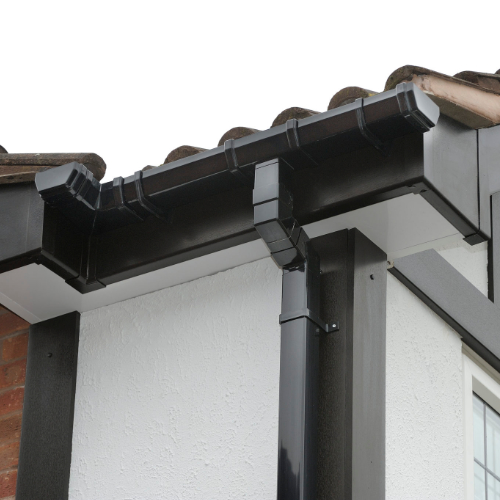
Timber fascia
Traditional installation of timber roofline components has been a mainstay of general roofing for hundreds of years.
Providing that the timber is maintained periodically and care is taken to choose a competent tradesperson to install it, timber can last many decades and gives a pleasing, natural appearance to a new roof.
Timber is also a low-cost solution versus UPVC but bear in mind that the installation of timber fascias, soffit and barge boards will take longer to install, which may offset some of the initial cost saving of using wood.

Cast iron guttering
Cast iron guttering is a very old and traditional method of transporting rain and wastewater from your roof to your drains.
What was once found on almost all properties now tends to be reserved for older properties where retaining original features is desired.
Cast iron guttering and downpipes can be costly to purchase, which might be a consideration for some homeowners.
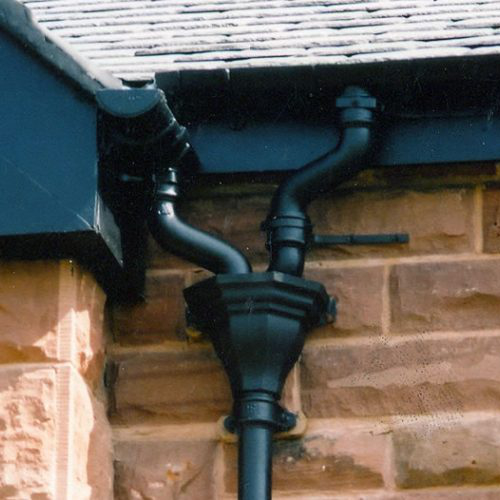
Zinc, copper and aluminium guttering
Non-ferrous metal guttering and downpipes are extremely common in many European countries and are becoming more common in the UK, with many off-the-shelf metal guttering profiles available with little on-site fabrication.
These systems can be costly, but lend a level of quality to a property, not to mention long life.

Plastic guttering
Plastic guttering is now by far the most common guttering used in domestic housing in the UK.
Low cost, simple-to-install plastic guttering is available off the shelf in most builders’ merchants and roofing merchants stock it as a standard.
It is the cheapest to install of all guttering and downpipe solutions, and is quick to install when undertaken by a competent person.
Plastic guttering is available in various profiles and colours.

Lead guttering
Lead downpipes are still being installed and specified for many period properties, especially Grade 1 and 2 listed buildings where retaining original features is a must.
Lead downpipes can look incredibly beautiful when fitted and many traditional designs are created, replicating historic designs of the last few hundred years.
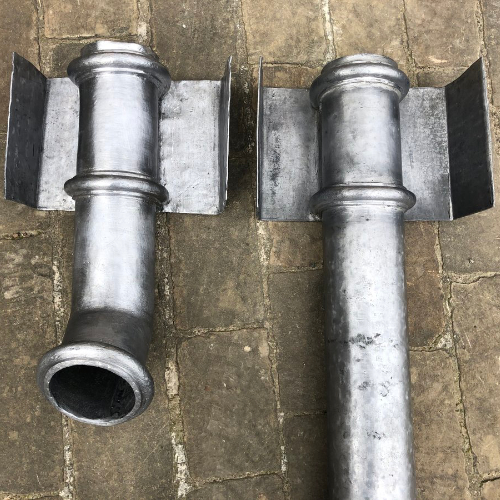
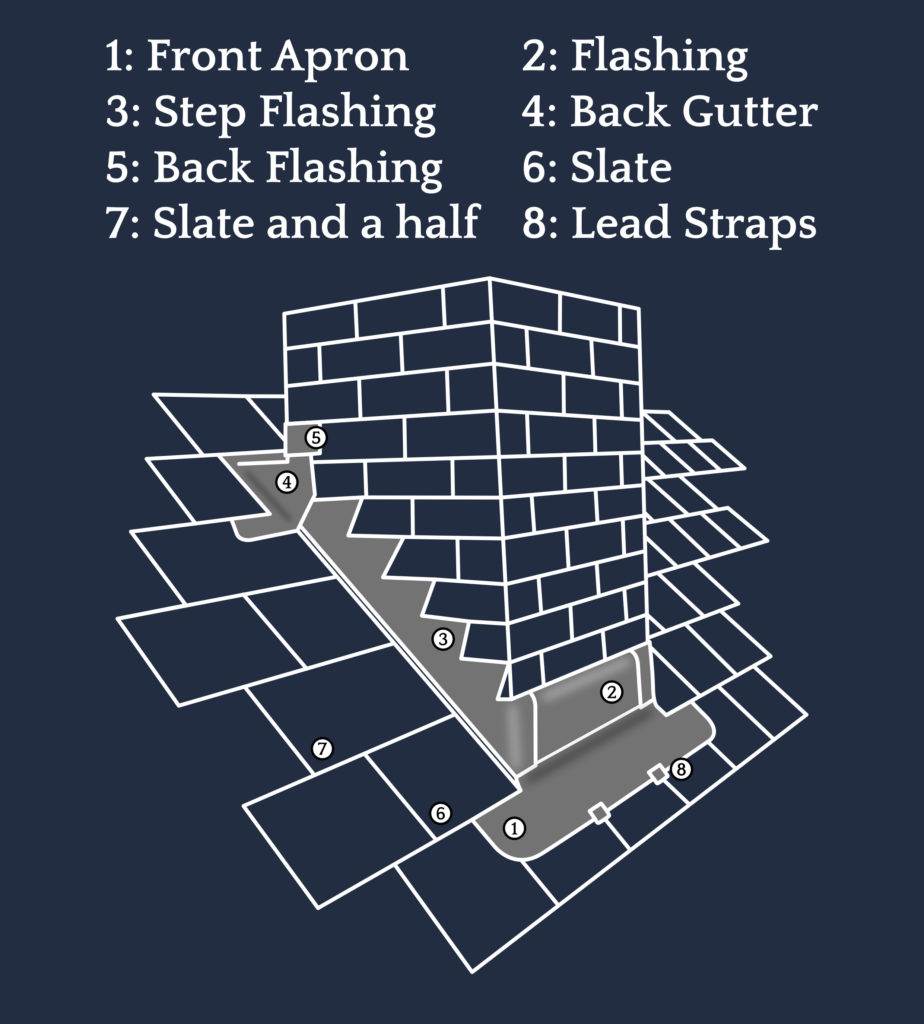
Lead.
Lead is the most common flashing material used in the UK.
It is especially prominent on older properties and traditional buildings. Although lead is a costly material, its lifespan is unparalleled and can last one hundred years easily when installed correctly. This, along with its recyclable properties, make it a good material for flashing details.
See anatomy of a chimney to understand how lead is used to waterproof a chimney.
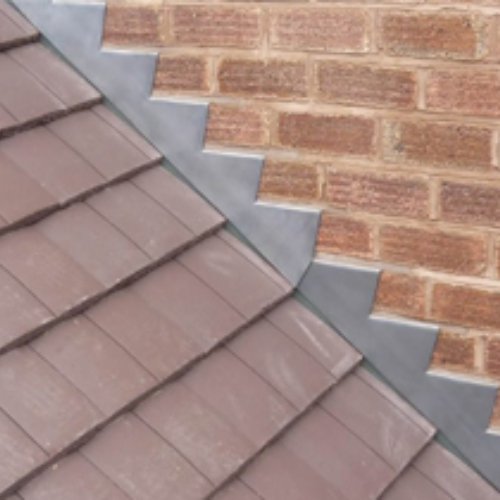
Man-made alternatives.
Other man-made alternative have entered the market in recent years, all of which have a relevant place in the roofing industry in their own right, for example where temporary or affordable housing is needed or where materials like lead may be stolen on low-level details.
